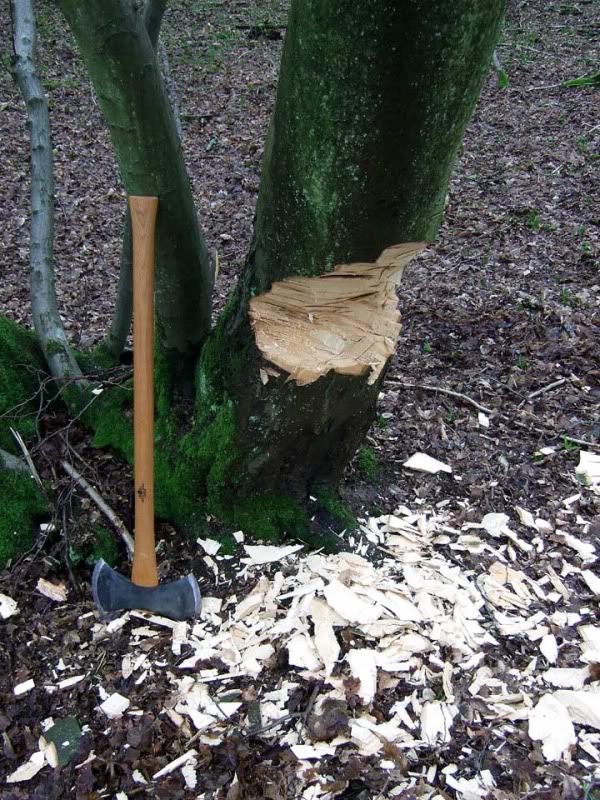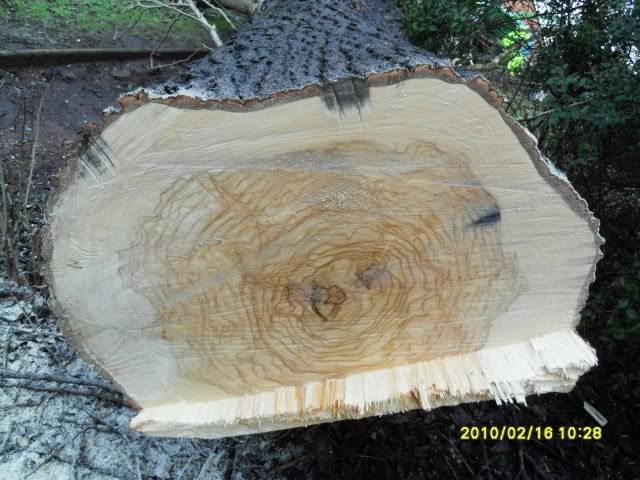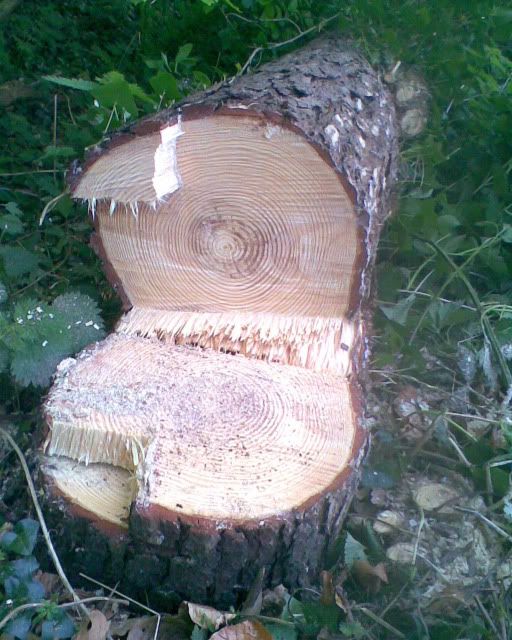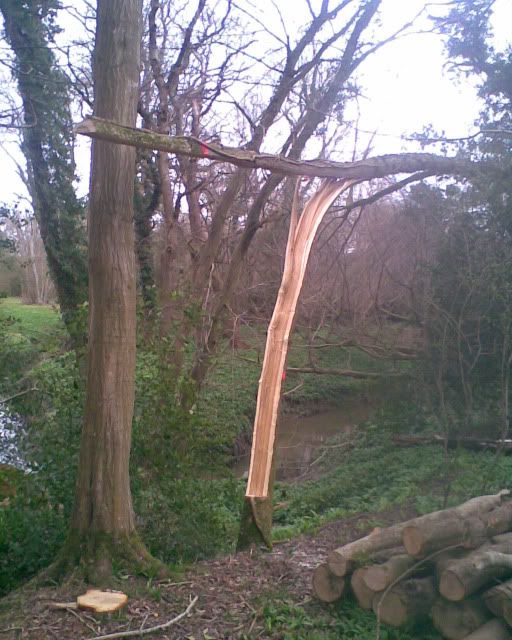I enjoy a bit of coppicing, hedge-laying and general woodland management. I have received advice and help from many sources but I have no formal training.
There are certainly huge gaps in my knowledge and skills which I'd like to fill with training when time and money permit. In the meantime, forums like this are a great source of expertise.
To that end, can anyone offer advice/criticism of my felling technique based on the pics below:


The stump is a bit high but due to the lean I couldn't get lower for the undercut. (The stump was subsequently tidied up with a saw).
Any pointers/observations welcome.
There are certainly huge gaps in my knowledge and skills which I'd like to fill with training when time and money permit. In the meantime, forums like this are a great source of expertise.
To that end, can anyone offer advice/criticism of my felling technique based on the pics below:


The stump is a bit high but due to the lean I couldn't get lower for the undercut. (The stump was subsequently tidied up with a saw).
Any pointers/observations welcome.






